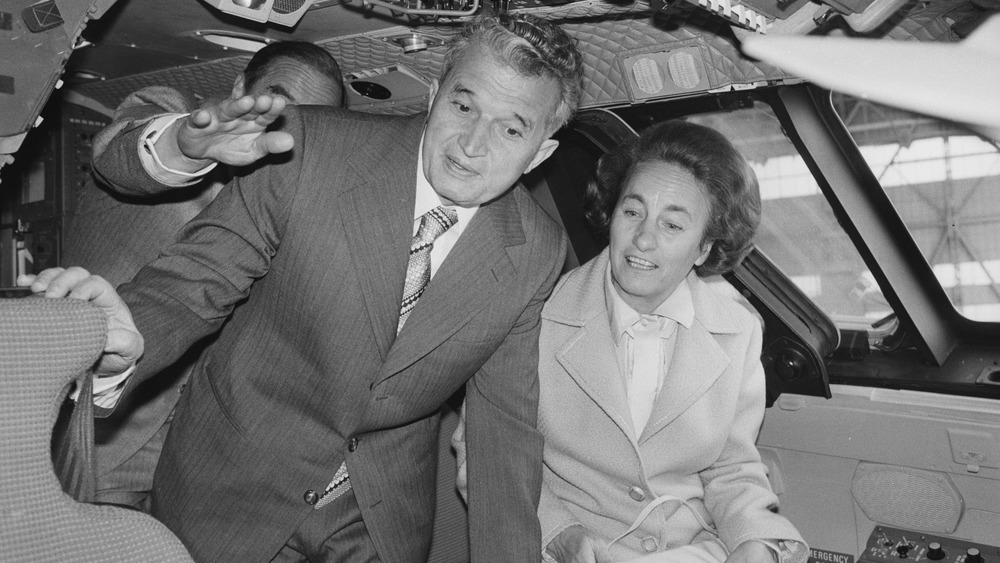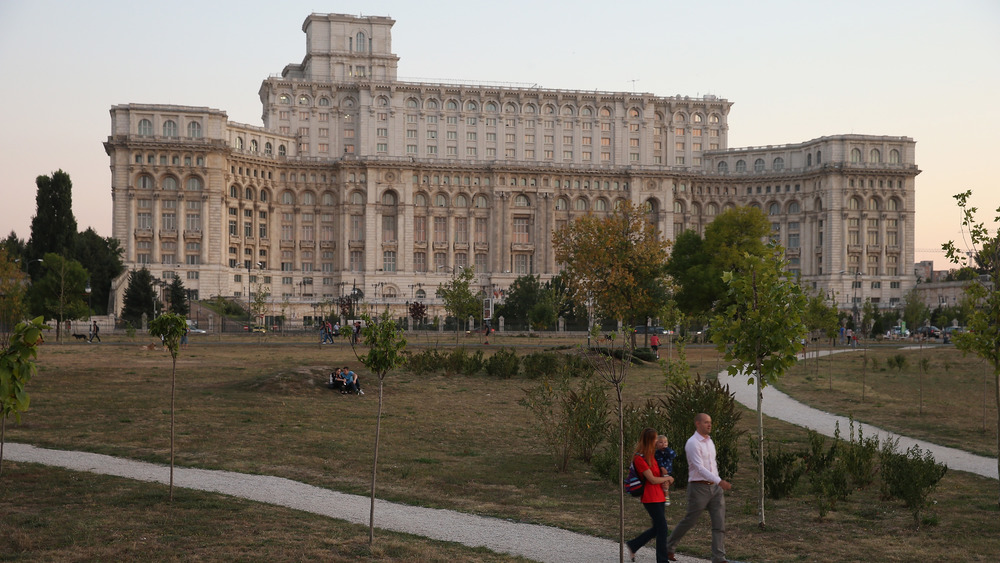The Truth About The Last Communist Leader Of Romania
In the late 1980s, Communist leaders of the Soviet Union were quickly falling, as Moscow gradually lost control of the countries in its union. And, on Christmas Day in 1989, Romanian dictator Nicolae Ceausescu was no different, except in one respect: after a short military tribunal trial on charges of economic sabotage and genocide, he and his wife, Elena, were found guilty and executed by firing squad.
The revolt against Ceausescu's regime began in mid-December in the western city of Timisoara, but Ceausescu ordered the uprising to be violently put down, and the country, which was already under massive financial stress, unraveled from there. Ceausescu, who climbed his way up the Romanian Communist Party from the time he was a teenager to become the first president of Romania in 1974, became fixated on paying off foreign debt. It was an obsession that resulted in unbearable austerity measures, leaving the country and its people in needless economic hardship. While the people of Romania faced a lack of basics, such as food shortages, blackouts, and gas cuts, Ceausescu spent massive amounts of cash on projects that were monuments to his presidency (such as the construction of the People's Palace pictured below). And, in an effort to increase Romania's population, Ceausescu banned all contraception, resulting in a generation of infants to be raised as orphans in more than 600 state care facilities, according to The New York Times. Citizens noted well the life of luxury Ceausescu and his wife were living while they starved.
Ceausescu's botched speech added gasoline to the revolution fire
After Ceausescu ordered the violent suppression of protesters in Timisoara, dissent rapidly spread throughout the country. Hundreds of thousands of demonstrators descended upon Bucharest, as Ceausescu delivered a particularly insulting speech on December 21, 1989, misjudging the mood of the nation as he blamed "fascist agitators." The crowd in Bucharest responded by booing and jeering him. So visibly shocked, he attempted to appease demonstrators with promises of higher wages. The speech was abruptly cut from the airwaves, as a man off-camera advised him to "come inside," the AP reported.
Ceausescu spent the next day in hiding. With the military on the side of the revolution and no hope of regaining control of the country, Ceausescu and his wife made a dramatic rooftop escape by helicopter. However, after the Romanian army threatened to take the helicopter down by missile, they were forced to land, the Tampa Bay Times reported. In short order, they were taken into custody, put on trial, and executed.
Ultimately, more than 1,100 people were killed during Romania's 1989 revolution. More than 30 years later, the Christmas season in Bucharest looks like many cities, but not for all. "For everybody else Christmas is Christmas, but for us it's just remembering how our fathers, our sons, our mothers, ended up in coffins," one Romanian man, who lived through the 1989 revolution, told the BBC in 2019. "The Christmas tree which my father bought for our family ended up in his coffin like flowers."

